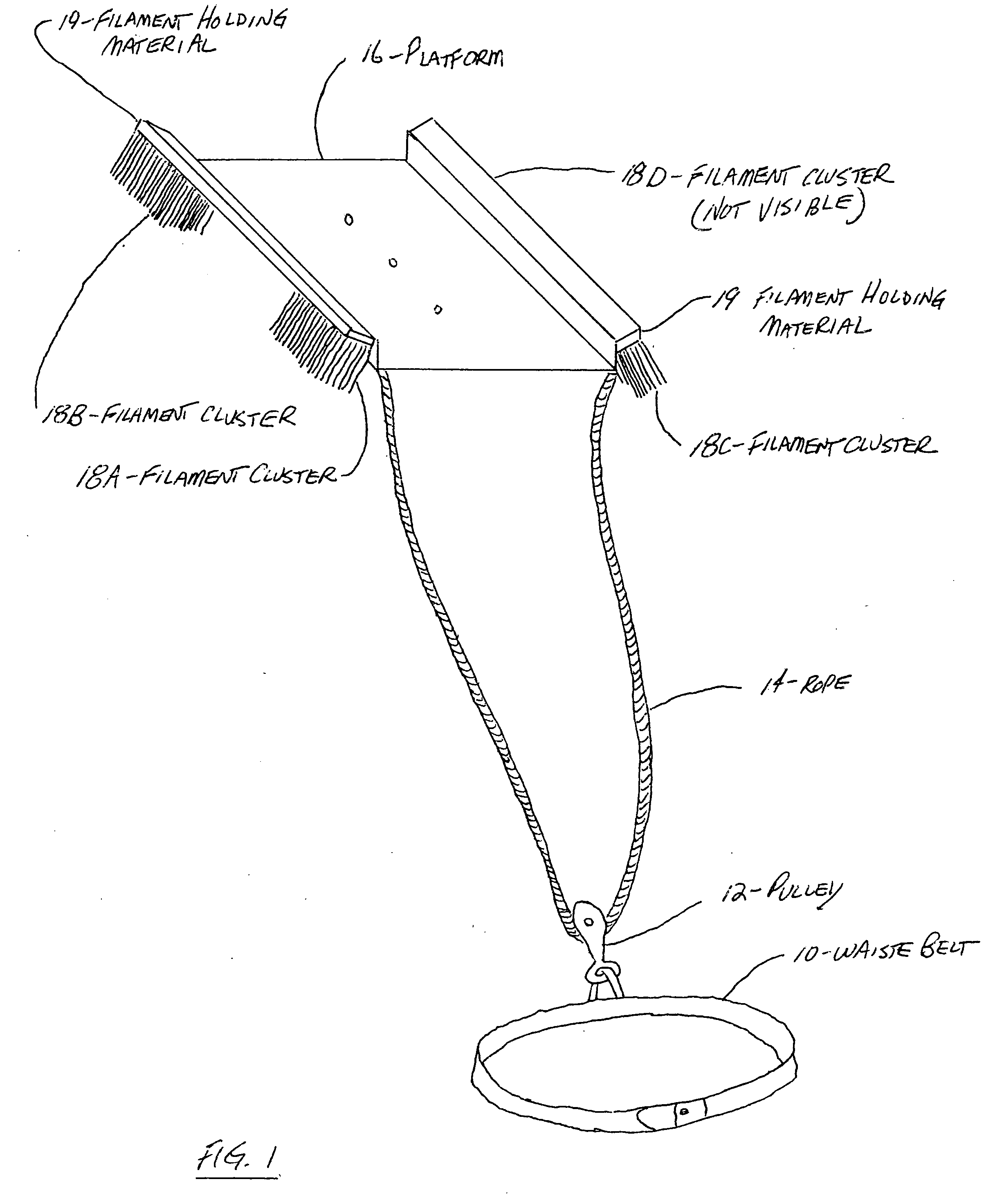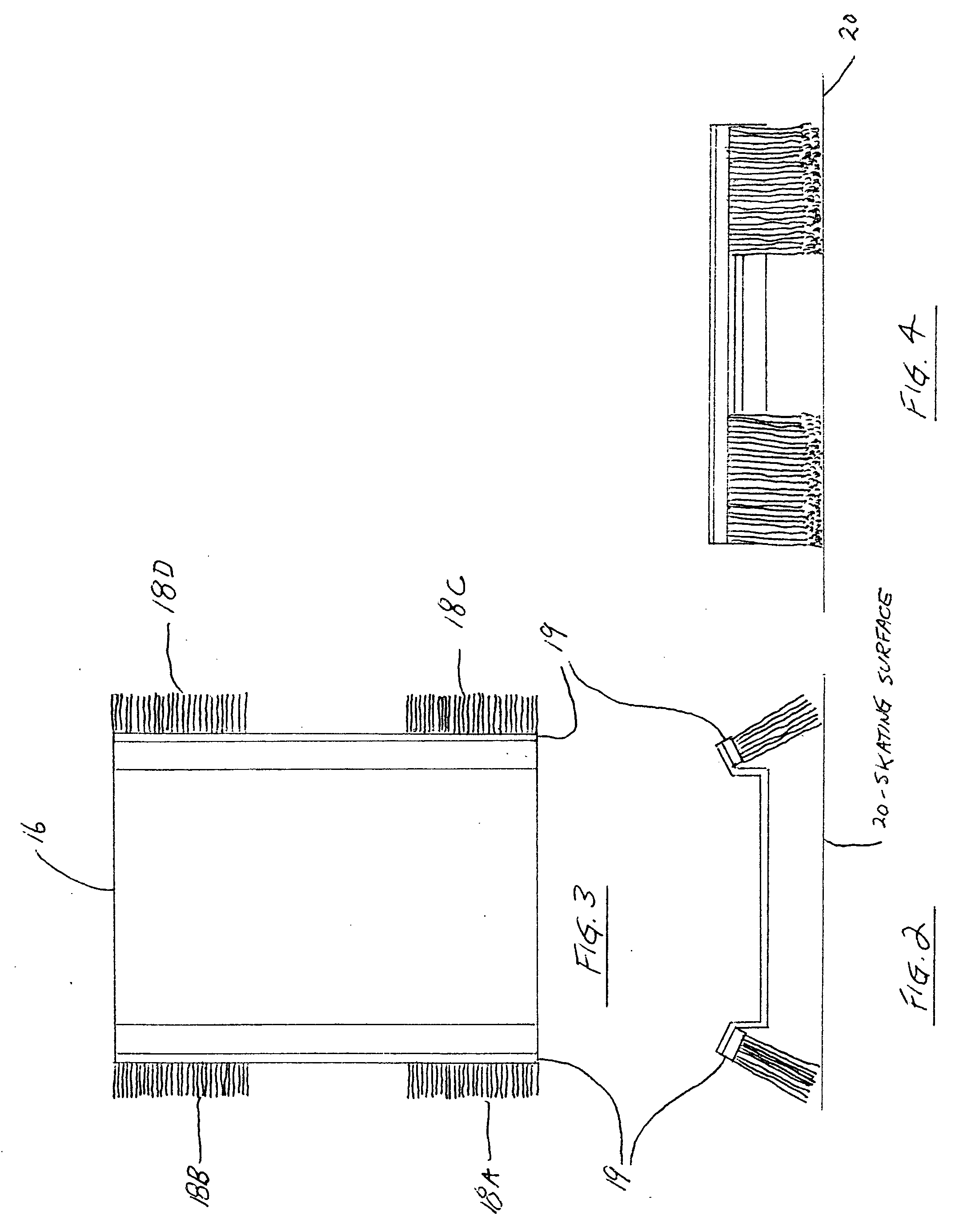Variable resistance tracton sled for skaters
a technology of resistance tracton and sled, which is applied in the direction of rider propulsion, vehicle components, children's carriage/perambulator, etc., can solve the problems of easy entanglement, skaters losing balance, and not doing as much good as restricted skating
- Summary
- Abstract
- Description
- Claims
- Application Information
AI Technical Summary
Benefits of technology
Problems solved by technology
Method used
Image
Examples
Embodiment Construction
—FIGS. 1,2,3, AND 4—PREFERRED EMBODIMENT
[0023]FIG. 1 shows a isometric view of my variable resistance traction sled for skaters. In the foreground is an adjustable waist belt 10. The belt 10 is made of nylon seatbelt material with an adjustable buckle. Other materials such as leather can also be used. Attached to the outside of the belt approximately half way around the belt is a pulley 12. The preferred embodiment uses a metal pulley 12. Other pulleys made from plastic or a combination of metal and plastic will also work. A length of ¼″ solid braided nylon rope approximately 15 feet long loops around the pulley forming a long skinny triangle shape with the front of a platform 16. The two sides of the triangle shape formed by the rope are approximately 7½ feet long. The rope ends are attached to the front of the platform with knots or clip-on type hardware (not shown). The platform 16 is rectangular in shape, having two short sides (front end and the back end) and two longer formed ...
PUM
 Login to View More
Login to View More Abstract
Description
Claims
Application Information
 Login to View More
Login to View More - R&D
- Intellectual Property
- Life Sciences
- Materials
- Tech Scout
- Unparalleled Data Quality
- Higher Quality Content
- 60% Fewer Hallucinations
Browse by: Latest US Patents, China's latest patents, Technical Efficacy Thesaurus, Application Domain, Technology Topic, Popular Technical Reports.
© 2025 PatSnap. All rights reserved.Legal|Privacy policy|Modern Slavery Act Transparency Statement|Sitemap|About US| Contact US: help@patsnap.com



